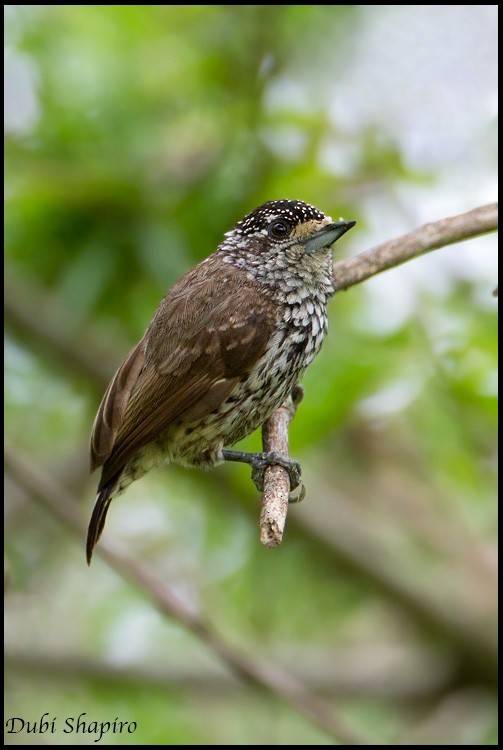White-wedged Piculet
A species of American and Speckled Piculets Scientific name : Picumnus albosquamatus Genus : American and Speckled Piculets
White-wedged Piculet, A species of American and Speckled Piculets
Botanical name: Picumnus albosquamatus
Genus: American and Speckled Piculets
Content
Description General Info
 Photo By Dubi Shapiro
Photo By Dubi Shapiro Description
The species grows to a length of 10 to 11 cm (3.9 to 4.3 in) and is rather variable in appearance. The male has a red fore-crown while the female has a brown or black crown. The upper parts of head and body are olive brown with white speckling, especially on the mantle. The wings are brown above, with pale edgings to the secondaries and tertiaries, and the tail is brown, the two central feathers being white, and there being a white patch on the outer edge near the tip. The throat, breast and belly are white with black scaling, the flanks and lower belly being less scaled than elsewhere. The iris is brown, the beak blackish and the legs grey. The juvenile is similar to the female but has a paler crown. 
Size
11 cm
Nest Placement
Cavity
Feeding Habits
White-wedged Piculet primarily consumes insect larvae, as observed during chick feeding. Foraging behavior and specific dietary adaptations remain largely undocumented.
Habitat
The white-wedged Piculet is typically found in dense areas of open, moderately dry savanna woodlands, often associated with the cerrado ecosystem, and in gallery forests adjacent to watercourses. Its presence spans across lowland regions and extends to various foothills, favoring landscapes dominated by a mix of trees and open spaces.
Dite type
Insectivorous
General Info
Feeding Habits
Bird food type
Distribution Area
The native range of the white-wedged piculet in tropical South America includes parts of Bolivia, southern Brazil and northern Paraguay; it is common in the Pantanal region. It is non-migratory and is found at altitudes of up to 2,100 m (6,900 ft). It occupies both moist lowland and upland deciduous forest, and sparsely-wooded, drier savannah country, thickets and cerrado. 
Species Status
P. albosquamatus has a very wide range and is fairly common. The population appears to be stable, and the International Union for Conservation of Nature has assessed its conservation status as being of least concern. 

 Photo By Dubi Shapiro
Photo By Dubi Shapiro